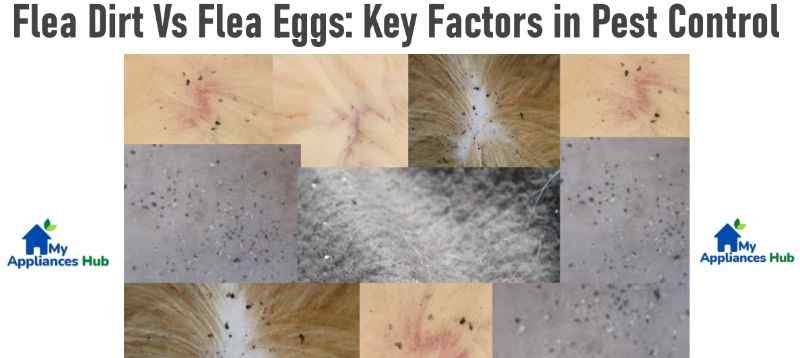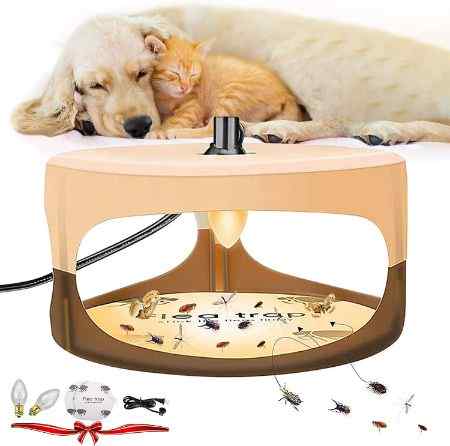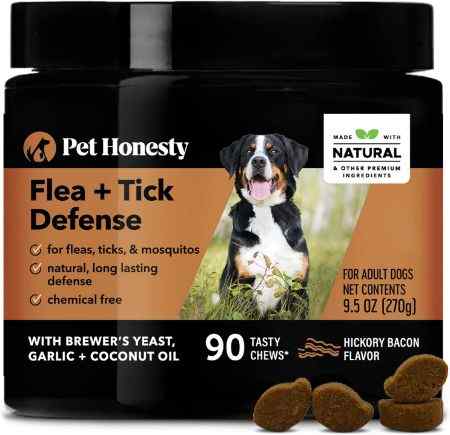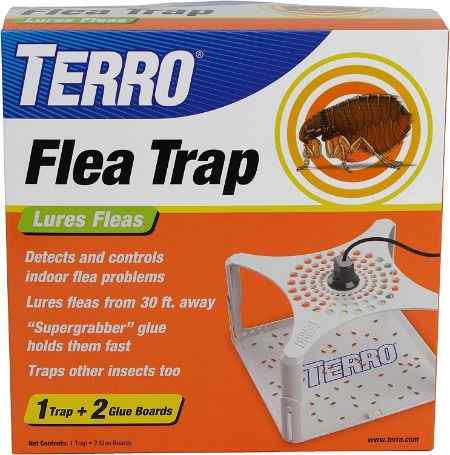The widespread and persistent parasite known as fleas can infest both homes and animals. Fleas go through various stages of growth, including the creation of flea eggs and the discharge of flea dirt, even though they are most well-known for their unpleasant bites. Effective pest management efforts depend on knowing the key distinctions between flea soil and flea eggs and the significance of doing so. Flea eggs are tiny, white, oval-shaped eggs laid by adult female fleas, whereas flea dirt, also known as flea excrement, flea feces, flea frass, or flea poop, is a combination of digested blood and flea secretion.
We will examine the traits and importance of flea dirt and flea eggs in this post, as well as how to spot and deal with these pests at various phases of their life cycles. Knowing how these two stages differ will make it easier for you to spot and get rid of fleas in your home.

Related Articles
Recommended Products to Treat and Get Rid of Flea Dirt and Flea Eggs at Home/Pets



Flea Eggs Vs. Flea Dirt (In Pest Control)
First, various treatment approaches are needed for treating flea dirt and eggs since they are at distinct phases of the flea life cycle. Adult fleas create flea excrement, which is a symptom that adult fleas are present on the pet or in the surrounding area. Use a product that targets adult fleas, such as a flea collar or a flea spray, to get rid of adult fleas. On the other hand, flea eggs are laid by adult fleas and develop into larvae before becoming adult fleas. Use an item that targets flea eggs and larvae, such as an insect growth regulator, to break the flea life cycle and stop the population from expanding.
Second, it’s possible to mistake flea frass and flea eggs for other substances, which can result in improper treatment and inefficient pest management. While flea eggs might be mistaken for dandruff or lint, flea soil can be confused for dirt or debris. The right medication must be used, and its efficacy must be assessed, so it is critical to correctly detect flea filth and flea eggs.
Third, pinpointing the difference between flea excrement and flea eggs can assist in locating the source of the infestation and determining the best course of treatment. For instance, if a pet has flea filth but no flea eggs, the creature is probably ingesting fleas from the environment rather than actively causing the infection. On the other hand, if there is both flea filth and flea eggs, the animal is probably picking up fleas as well as adding to the problem by reproducing. Using this information, pest control efforts may be directed and the right locations can be treated.
For effective pest management operations, it is crucial to distinguish between flea soil and flea eggs since doing so permits the adoption of the right treatment methods, aids in precisely pinpointing the source of the infestation, and allows for the evaluation of treatment efficiency.
Differentiating Between Flea Dirt and Flea Eggs in Appearance and Size
- Flea filth, which appears as tiny, dark flecks on surfaces, is the dried excrement of fleas.
- The size of a grain of salt, flea eggs are white and transparent.
- Flea eggs are frequently detected on a pet’s skin or fur, whereas flea dirt is typically found on pets or in areas where pets congregate.
- Flea eggs are more difficult to see because of their small size and transparency, while flea frass is simple to spot because it is a darker color.
- The appearance and size of flea excrement and flea eggs are the key distinctions. While flea eggs are tiny and challenging to notice, flea filth is dark and obvious.
Where to Find Flea Dirt and Flea Eggs on the Host
On the host, flea filth and eggs can often be discovered in several places. The dried excrement of fleas, known as flea poop, is typically seen on surfaces where the insects have been eating, such as a pet’s fur or skin. Additionally, it can be discovered on carpets, blankets, and other areas where pets spend time. Small, dark specks that are easier to see because of their hue are flea dirt.
On the other hand, since flea eggs are laid by adult fleas, they are typically discovered on the host’s fur or skin. The size of a grain of salt, flea eggs are white and transparent. Due to their small size and transparency, they are difficult to notice, but are frequently discovered by attentively examining a pet’s fur.
Flea dirt is discovered on surfaces, but flea eggs are found on the host’s fur or skin. This is the fundamental distinction between flea poop and flea eggs in terms of where they can be found. When trying to find and cure a flea infestation, it is crucial to investigate both areas.
Differences Between Flea Dirt and Flea Eggs in the Flea Life Cycle
Both flea filth and flea eggs are crucial phases in the life cycle of fleas. They have unique qualities and varied functions, though. Flea frass is the partially digested blood waste that adult fleas create. It can be seen around the base of the tail and in places where the pet spends a lot of time, such as beds and blankets. It appears as tiny black specks on a pet’s fur. Flea dirt is an indication that adult fleas are present and actively eating on the animal.
On the other hand, adult fleas lay little, white, oval-shaped eggs that are known as flea eggs. Since they are much smaller and lighter in color than flea poop, they are typically not as obvious where flea poop is present. The life cycle of fleas includes the development of flea eggs into larvae, which then mature into adult fleas. As a result, flea eggs are essential for the growth and survival of the flea population.
In conclusion, the primary distinction between flea dirt and flea eggs is that the former is a feces secreted by adult fleas and contains partially digested blood, whereas the latter is a small, white, oval-shaped egg set by an adult flea that develops into a larva. Both play a part in the flea life cycle, but whereas flea eggs are essential for reproduction and the survival of the flea population, flea dirt indicates the presence and feeding of adult fleas.
Distinguishing Between Flea Eggs and Flea Dirt on Cats and Dogs
- Flea eggs are tiny, oval-shaped, white or transparent eggs laid by adult female fleas. They are around the size of a grain of salt, or 0.5 mm in size.
- The dried faeces of adult fleas is referred to as flea dirt or flea feces. On a cat or dog, it appears as tiny, dark dots. Blood that has only half digested makes up flea
- Examining the size and color of the flea eggs might help you tell them apart from the flea faeces. Flea dirt is somewhat bigger and darker in color than flea eggs, which are tiny and white or translucent.
- Try cleaning it off with a moist towel to see whether it is flea excrement or flea eggs on your cat or dog. Flea dirt is probably present if it peels off readily and leaves a crimson color. Flea eggs are most likely present if it is difficult to remove.
- Fleas can itch and make your cat or dog uncomfortable, so it’s crucial to keep them away. Consult a veterinarian or a reputable pest control service for aid in getting rid of the fleas and preventing new infestations if you spot flea eggs or flea frass on your pet.
Conclusion: Difference Between Flea Dirt and Flea Eggs
Flea eggs and flea filth are both stages in the flea life cycle, but they must be distinguished in pest control operations because they require different approaches to treatment.
Flea dirt is a mixture of digested blood and flea excretion, often known as flea excrement or flea feces. It appears as tiny, dark spots on bedding, furnishings, or a pet’s coat. Flea presence and active feeding on a host are indicated by the presence of flea excrement.
On the other hand, mature female fleas lay flea eggs, which are tiny, white, and oval-shaped. Due of their small size and light color, they are typically located in the environment rather than on the host and might be challenging to see. Flea eggs hatch into larvae, which develop into adult fleas by spinning cocoons.
Identifying and treating fleas at every step of their life cycle is essential for efficient flea management. This may entail treating the surroundings, vacuuming, treating pets for fleas, and maybe employing insecticides or other pest management techniques.
It’s also crucial to keep in mind that bugs other than fleas are capable of leaving behind tiny, black specks in their environment. A pest management expert or veterinarian should always be consulted to precisely pinpoint the cause of any pest-related issues and choose the most appropriate course of action.